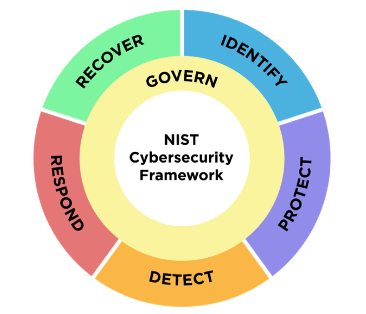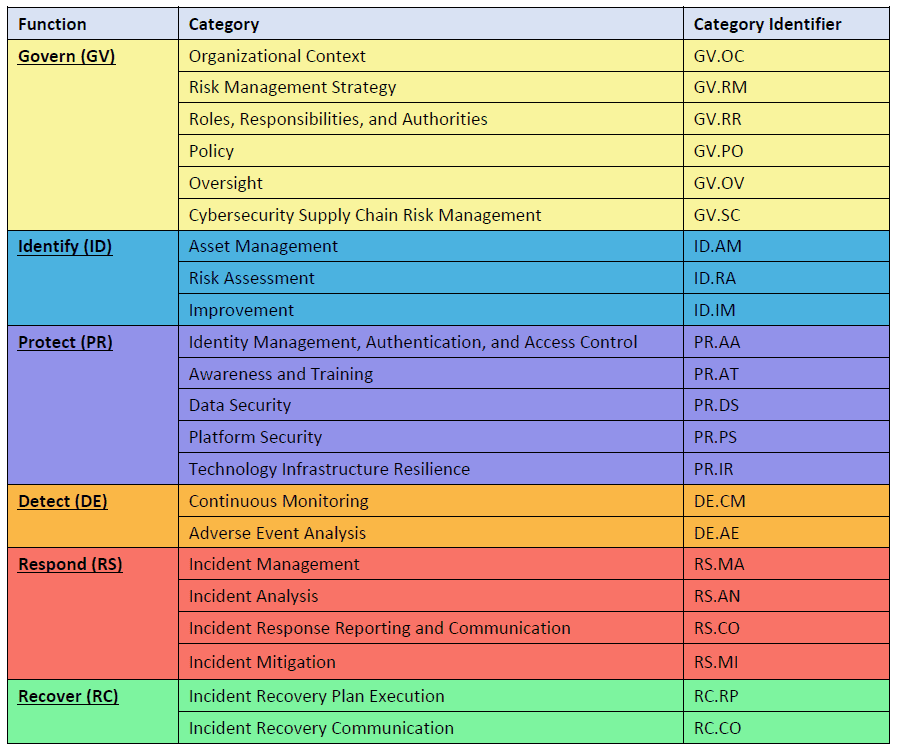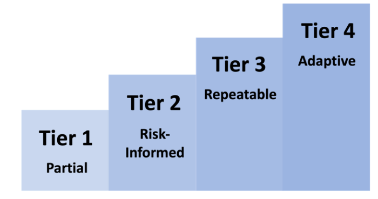NIST CSF
Overview
The NIST Cybersecurity Framework is designed to help organizations to manage and reduce their cybersecurity risks. The CSF can be used to address cybersecurity risks alongside other risks of the enterprise, including those that are financial, privacy, supply chain, reputational, technological, or physical in nature.
The CSF includes:
- The CSF Core: a taxonomy of high-level cybersecurity outcomes that can help an organization manage its cybersecurity risks. It is a set of cybersecurity outcomes arranged by Function, then Categories, and finally Sub-Categories.
- The CSF Organizational Profiles: a mechanism for describing an organizational current and target cybersecurity posture in terms of the CSF Core’s outcomes.
- The CSF Tiers: they can be applied to CSF Organizational Profiles to characterize the rigor of an organization’s cybersecurity risk governance and management practices.
The CSF describes what desirable outcomes an organization can aspire to achieve, but it does not prescribe desired outcomes nor how they may be achieved. It may link to other documentation for how to achieve it.
CSF Core Functions
The CSF Core Functions are:
- Govern: The cybersecurity risk management strategy, expectations, and policy are established, communicated, and monitored.
- Identify: The current cybersecurity risks are understood.
- Protect: Safeguards to manage the cybersecurity risks are used.
- Detect: Possible cybersecurity attacks and compromises are found and analyzed.
- Respond: Actions regarding a detected cybersecurity incident are taken.
- Recover: Assets and operations affected by a cybersecurity incident are taken.
- Recover: Assets and operations affected by a cybersecurity incident are restored.

Note: The CSF introduces the Governance function. But what does governance mean?! ![]() The security governance sets the structure needed to steer a cybersecurity program toward achieving their enterprise goals.
The security governance sets the structure needed to steer a cybersecurity program toward achieving their enterprise goals. ![]() It specifies the strategy, the expectations, and the policies for the security program globally, and for each security function (identify, protect, detect…) individually. It also describes how this program is communicated and monitored.
It specifies the strategy, the expectations, and the policies for the security program globally, and for each security function (identify, protect, detect…) individually. It also describes how this program is communicated and monitored.
The CSF Core functions are broken down into Categories and Subcategories. Let’s review that!

CSF Profiles and Tiers
The CSF Organizational Profile describe a current and target cybersecurity posture. They are used to understand, tailor, assess, prioritize, and communicate the CSF Core’s outcomes. A Community Profile is a baseline of CSF outcomes that is created and published to address shared interests and goals for a particular sector, technology, threat type, or other use case.
An organization should go through the following steps to use an Organizational profile:

An organization can use the Tiers to inform its current and target profiles. The Tiers reflect an organization’s practices for managing cybersecurity risks as partial, risk-informed, repeatable, or adaptative. The Tiers should complement the risk management methodology rather than replace it.

Note: The CSF can be integrated with other risk management and assessment programs such as the RMF and SP 800-30. For an organization using the RMF, the CSF can be used to complement the RMF’s approach to selecting and prioritizing controls from the NIST SP 800-53. The CSF can be used to identify, align, and deconflict security requirements and to subsequently inform the selection of security controls for an organization. There is a traceability matrix from CSF v1.1 to SP 800-53 but it does not exist for v2 yet.
Note: Based on original learning material from NIST.